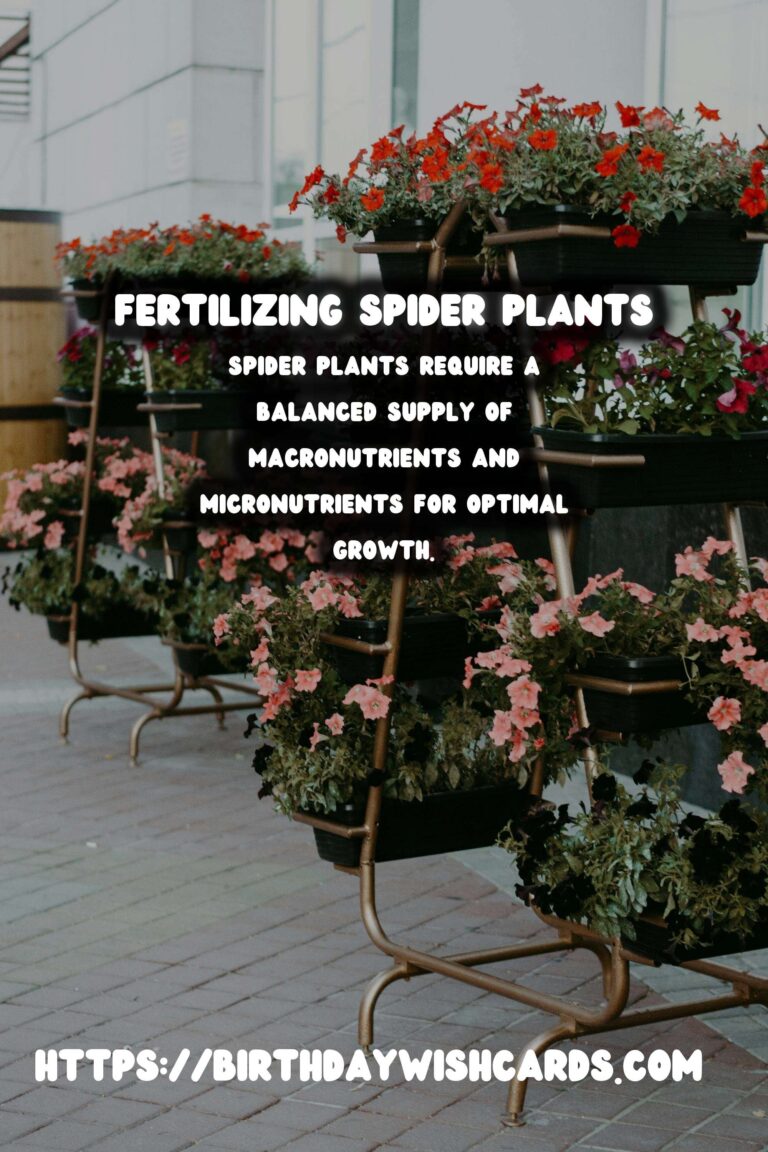
Spider plants, known for their cascading green and white foliage, are popular houseplants due to their hardy nature and aesthetic appeal. However, like any other plant, they require proper care to thrive, and fertilizing plays a crucial role in their health. In this comprehensive guide, we will explore the best practices for fertilizing spider plants to ensure they grow strong and vibrant.
Understanding Spider Plant Nutritional Needs
Spider plants are relatively low-maintenance, but they do have specific nutritional needs that should be met for optimal growth. They require a balanced supply of macronutrients such as nitrogen, phosphorus, and potassium, as well as micronutrients like calcium, magnesium, and iron. These nutrients support various plant functions, from photosynthesis to root development.
Choosing the Right Fertilizer
When it comes to fertilizing spider plants, the choice of fertilizer can make a significant difference. It’s essential to select a balanced, water-soluble fertilizer with an equal ratio of N-P-K, such as a 10-10-10 formula. Organic fertilizers, such as compost or well-rotted manure, can also be beneficial as they slowly release nutrients and improve soil health.
How Often to Fertilize Spider Plants
Spider plants should be fertilized during their active growing season, which typically spans from spring to summer. During this period, a monthly application of fertilizer is generally sufficient. In the fall and winter months, when the plant’s growth slows, it’s best to reduce fertilization frequency to once every two months or halt it entirely to prevent nutrient overload.
Signs of Over-Fertilization and How to Avoid It
Over-fertilization can be detrimental to spider plants, leading to symptoms such as brown leaf tips, yellowing leaves, and stunted growth. To avoid this, always follow the recommended dosage on the fertilizer package and consider diluting it to half-strength. Additionally, ensure that the plant’s soil is well-draining to prevent nutrient build-up.
Natural Fertilizing Alternatives
For those who prefer natural methods, several alternatives can provide the necessary nutrients without the need for commercial fertilizers. Homemade compost tea, made from kitchen scraps or garden waste, is an excellent option. Additionally, using earthworm castings can boost the soil’s fertility and improve plant health.
Conclusion
Fertilizing spider plants is a straightforward process that can significantly enhance their growth and vitality when done correctly. By understanding their nutritional needs, choosing the right fertilizer, and adhering to a proper fertilizing schedule, you can ensure that your spider plants remain healthy and lush. Remember, moderation is key, and always observe your plants for any signs of distress.
Spider plants require a balanced supply of macronutrients and micronutrients for optimal growth. A balanced, water-soluble fertilizer with an equal ratio of N-P-K is recommended for spider plants. Fertilize spider plants monthly during their active growing season from spring to summer. Over-fertilization can cause brown leaf tips and yellowing leaves in spider plants. Natural alternatives like compost tea and earthworm castings can be used to fertilize spider plants. 
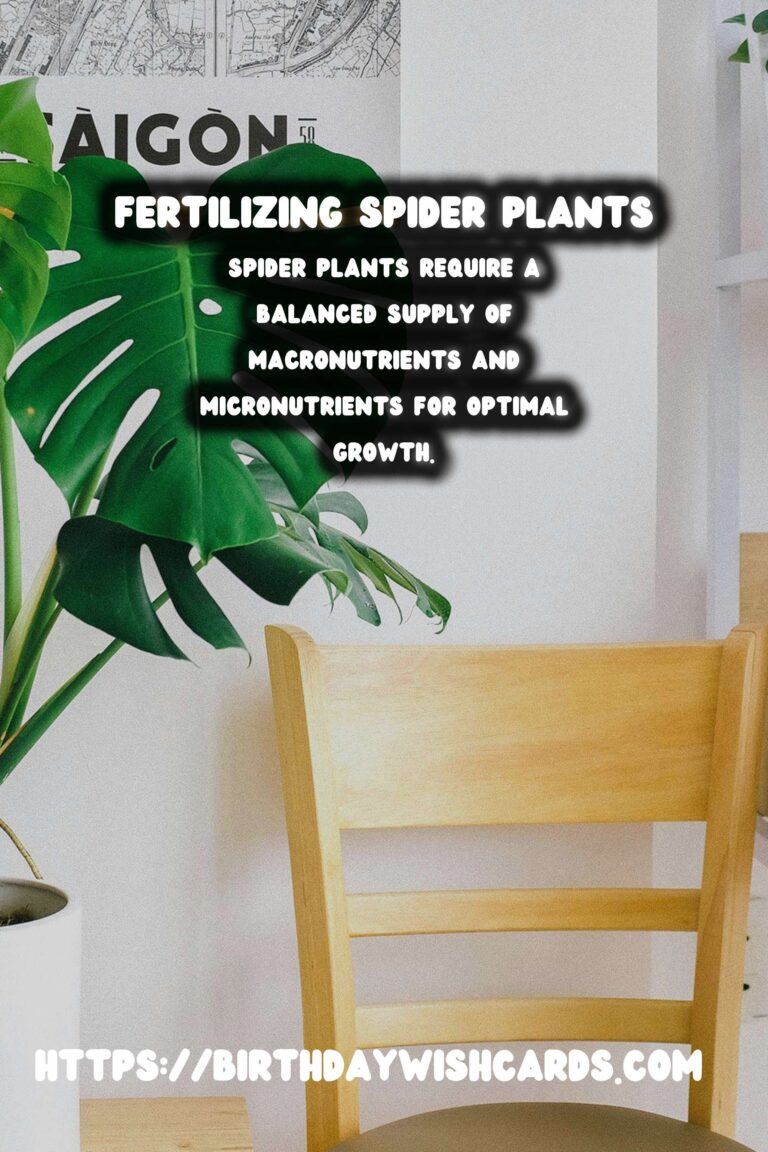

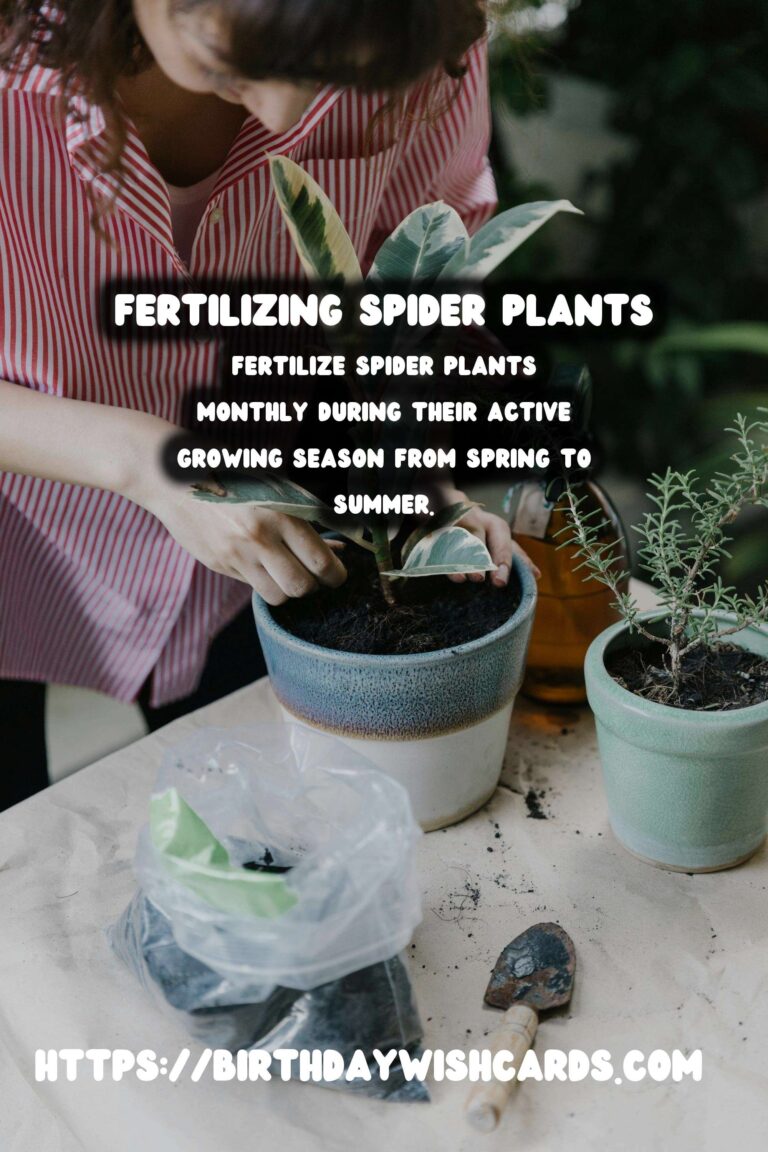
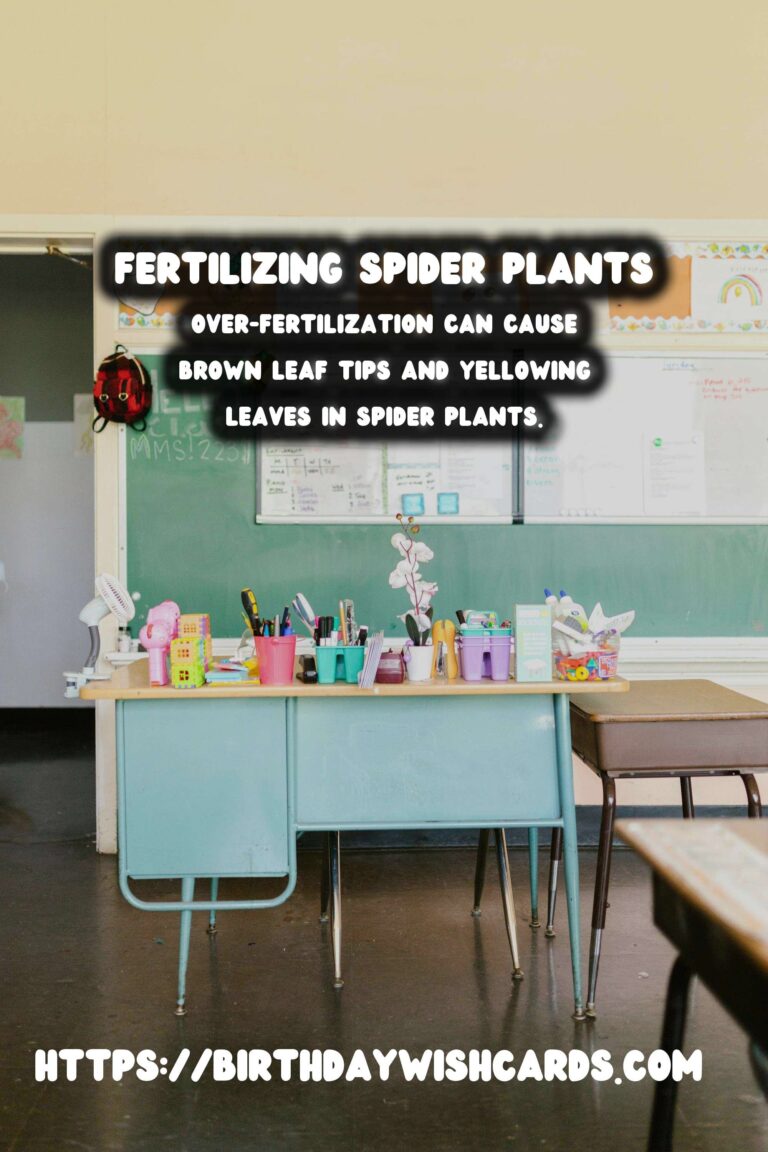

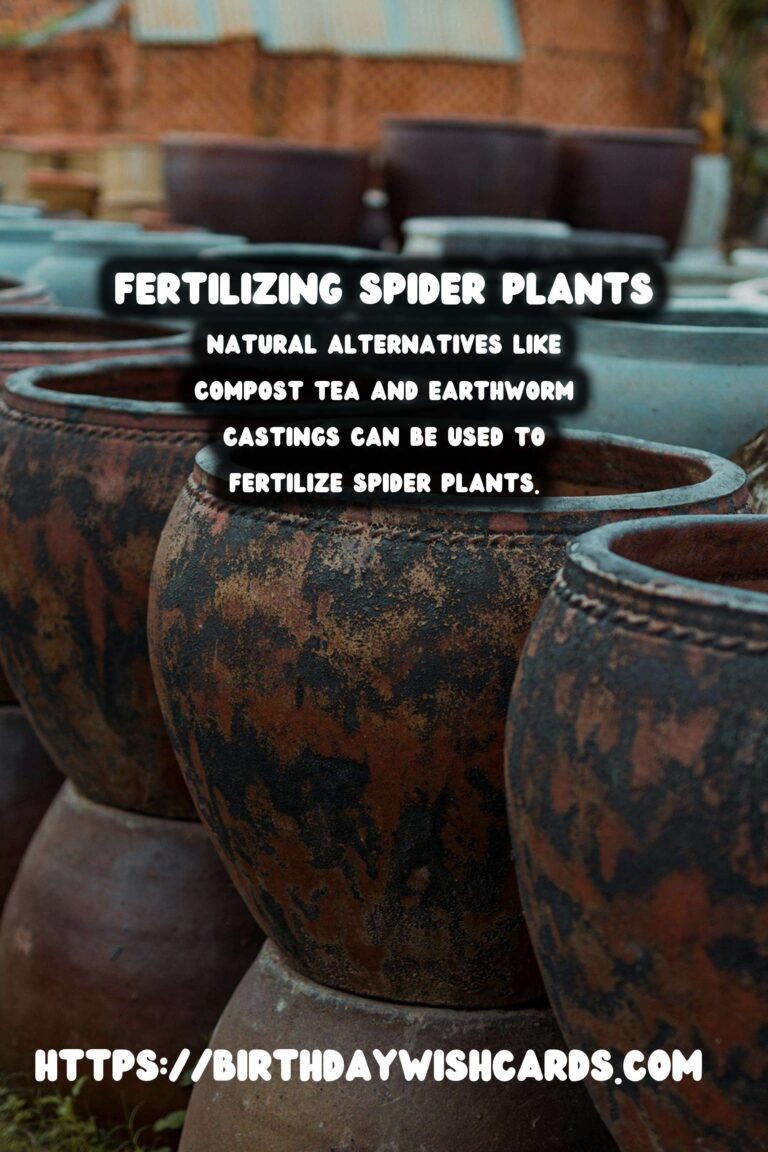
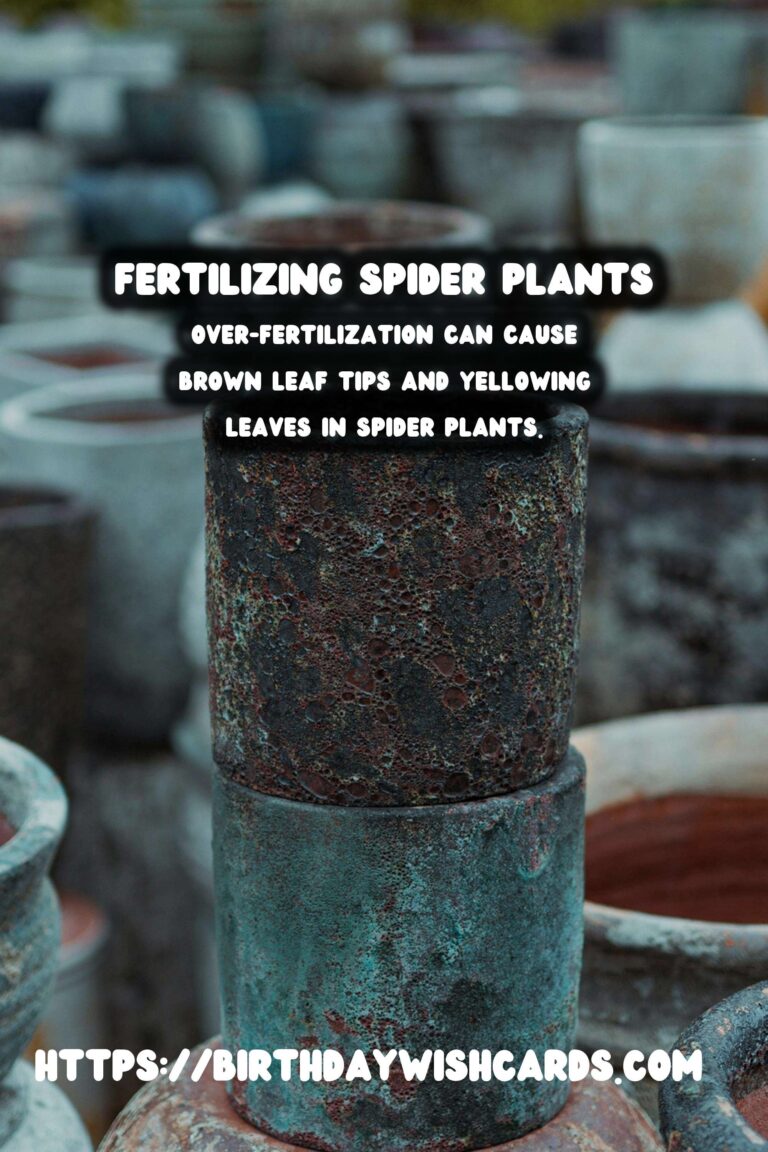
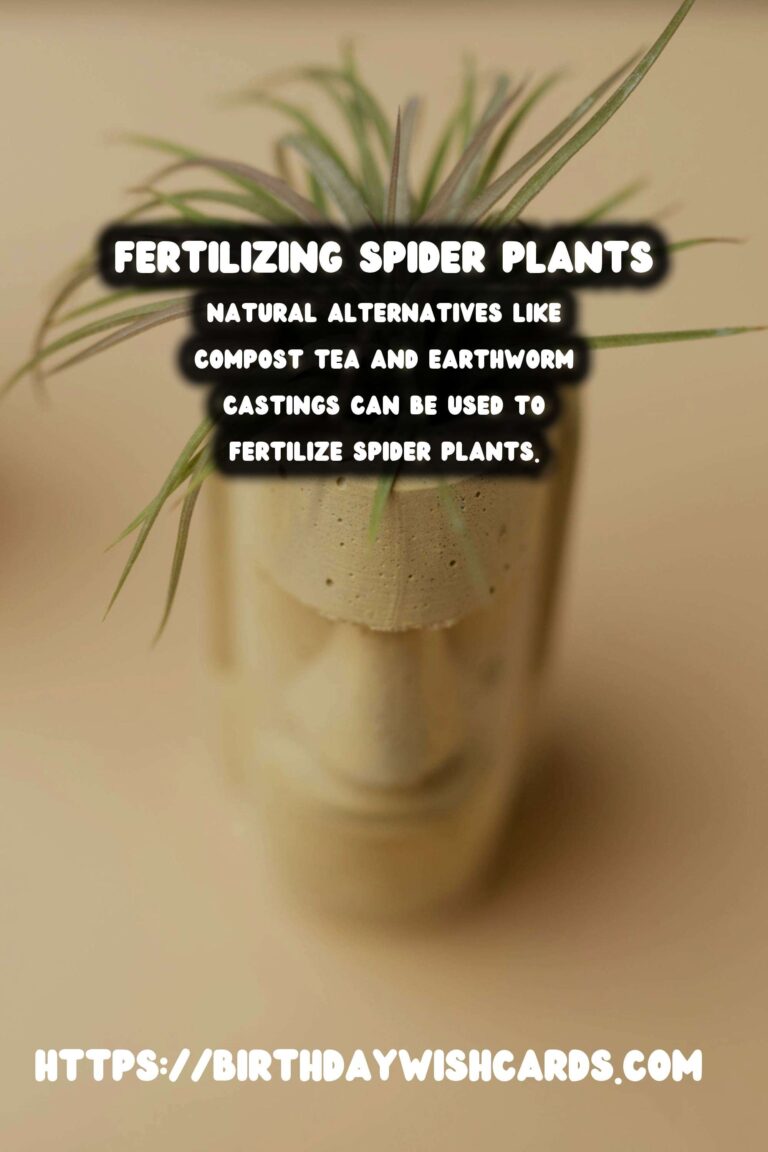
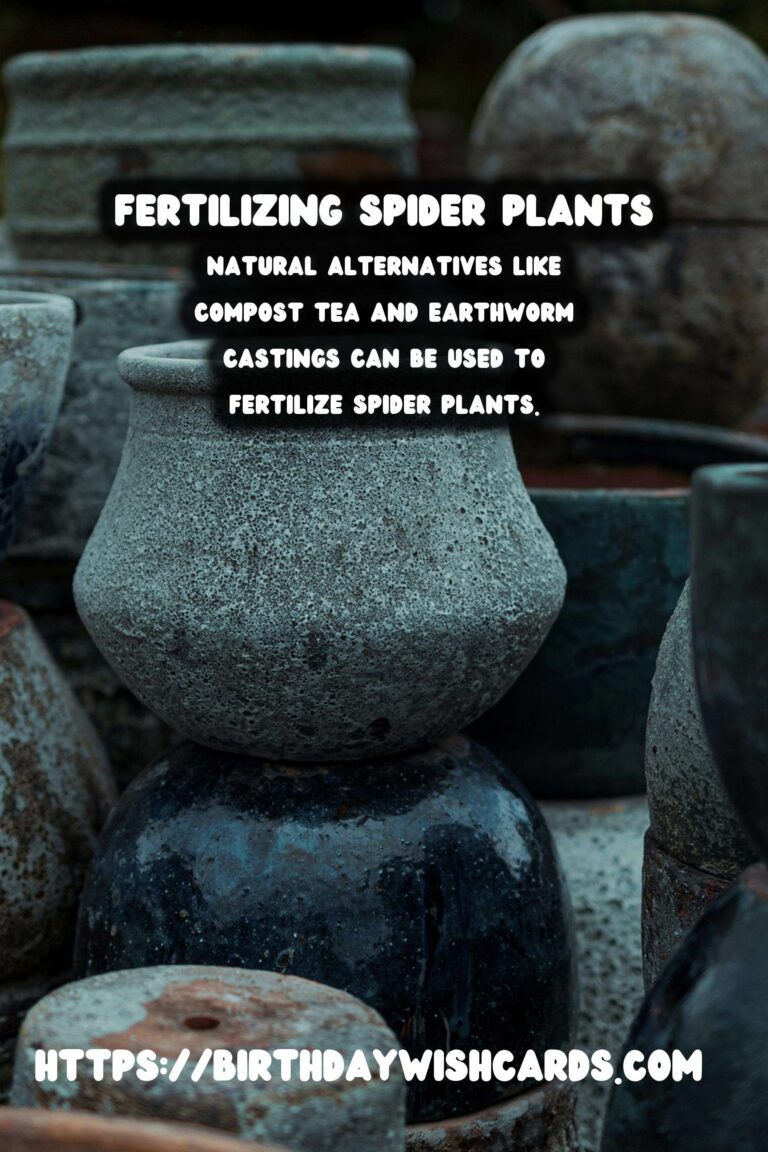
#SpiderPlants #PlantCare #FertilizingPlants #GardeningTips #HousePlants




